Discovery date 15 February 1997 Minor planet category Centaur Aphelion 18.511 AU (2.7692 Tm) Inclination 23.405° Asteroid group Centaur | Alternative names 1997 CU26 Observation arc 9684 days (26.51 yr) Discovered 15 February 1997 Orbits Sun | |
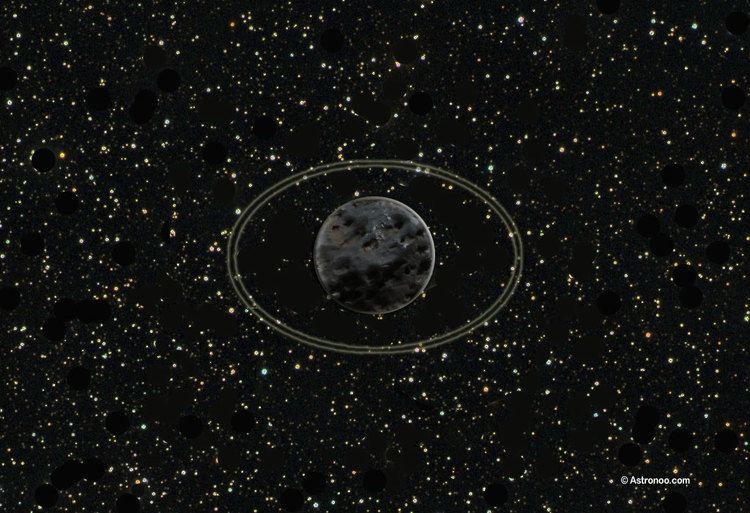 | ||
Similar James V Scotti discoveries, Other celestial objects | ||
10199 Chariklo (/ˈkærᵻkloʊ/ or /kəˈrɪkloʊ/; Ancient Greek: Χαρικλώ; provisional designation: 1997 CU26) is the largest confirmed centaur (minor planet of the outer Solar System). It orbits the Sun between Saturn and Uranus, grazing the orbit of Uranus. On 26 March 2014, astronomers announced the discovery of two rings (nicknamed Oiapoque and Chuí), around Chariklo by observing a stellar occultation. making it the first known minor planet to have rings.
Contents
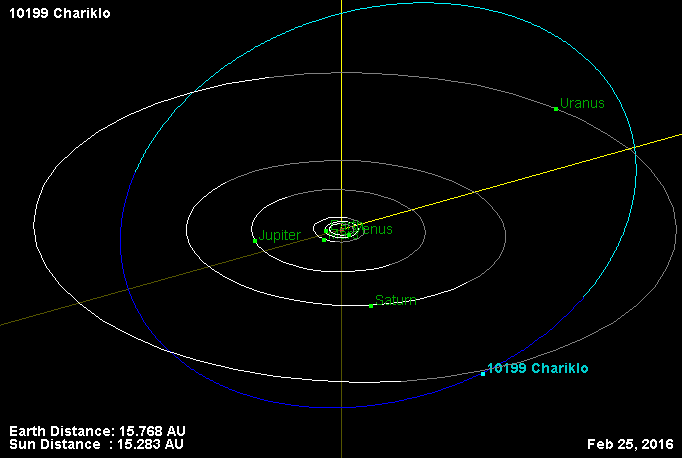
Chariklo was discovered by James V. Scotti of the Spacewatch program on February 15, 1997. Chariklo is named after the nymph Chariclo (Χαρικλώ), the wife of Chiron and the daughter of Apollo.
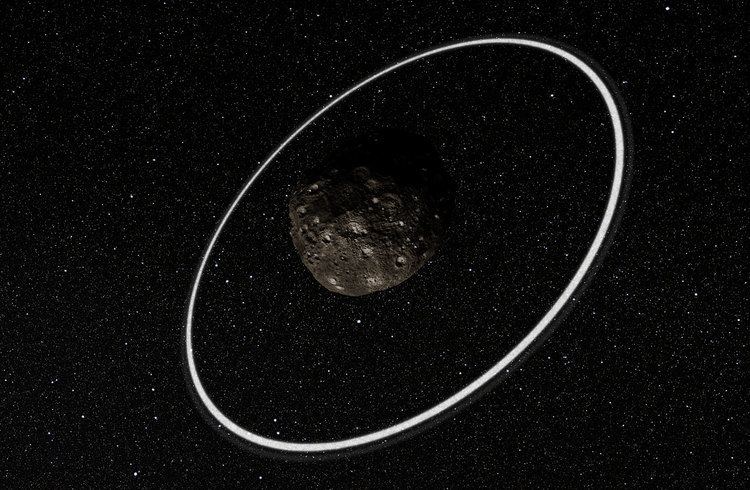
A photometric study in 2001 was unable to find a definite period of rotation. Infrared observations of Chariklo indicate the presence of water ice, which may in fact be located in its rings.

Michael Brown's website lists it as possibly a dwarf planet with a measured diameter of 232 km.
An asteroid with rings 10199 chariklo
Size
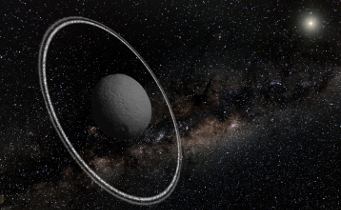
Chariklo is currently the largest known centaur, with an estimated diameter of about 250 km (160 mi). 2060 Chiron is likely to be the second largest with 220 km (140 mi). The lost centaur 1995 SN55 may even be larger, with an estimated diameter close to 300 km (190 mi).
Orbit
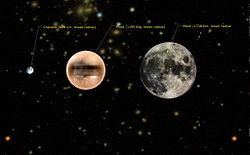
Centaurs originated in the Kuiper belt and are in dynamically unstable orbits that will lead to ejection from the Solar System, an impact with a planet or the Sun, or transition into a short-period comet.
The orbit of Chariklo is more stable than those of Nessus, Chiron, and Pholus. Chariklo lies within 0.09 AU of the 4:3 resonance of Uranus and is estimated to have a relatively long orbital half-life of about 10.3 Myr. Orbital simulations of twenty clones of Chariklo suggest that Chariklo will not start to regularly come within 3 AU (450 Gm) of Uranus for about thirty thousand years.
During the perihelic oppositions of 2003–04, Chariklo had an apparent magnitude of +17.7. As of 2014, Chariklo was 14.8 AU from the Sun.
Rings
A stellar occultation in 2013 revealed that Chariklo has two rings with radii 396 and 405 km and widths of about 7 km and 3.5 km respectively. The rings are approximately 9 km apart. This makes Chariklo the smallest known object to have rings. These rings are consistent with an edge-on orientation in 2008, which naturally explains Chariklo's dimming before 2008 and brightening since. Furthermore, it also naturally explains the gradual disappearance of the water-ice features in Chariklo's spectrum before 2008 and their reappearance thereafter if the water ice is in Chariklo's rings.
The existence of a ring system around a minor planet was unexpected because it had been thought that rings could only be stable around much more massive bodies. Ring systems around minor bodies had not previously been discovered despite the search for them through direct imaging and stellar occultation techniques. Chariklo's rings should disperse over a period of at most a few million years, so either they are very young, or they are actively contained by shepherd moons with a mass comparable to that of the rings. The team nicknamed the rings Oiapoque (the inner, more substantial ring) and Chuí (the outer ring), after the two rivers that form the northern and southern coastal borders of Brazil. A request for formal names will be submitted to the IAU at a later date.
2060 Chiron may have a similar pair of rings.
